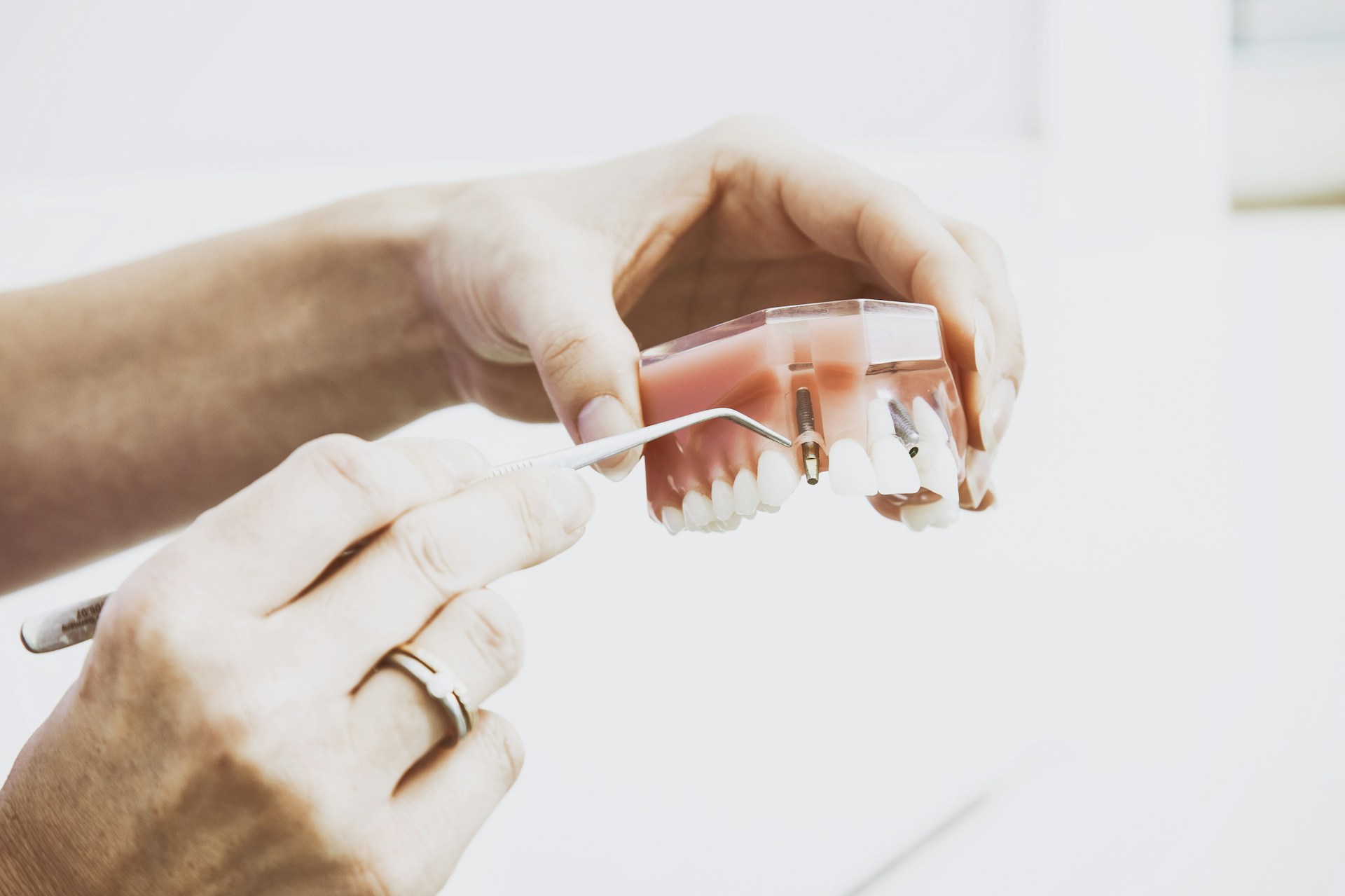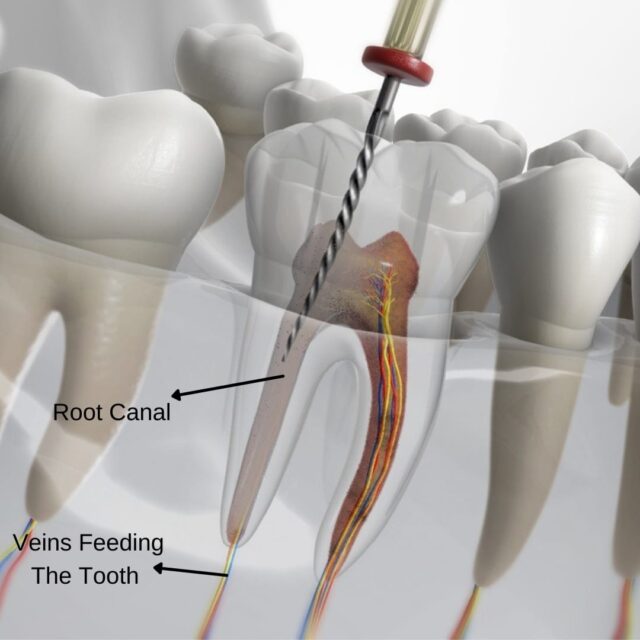SMILE- It costs nothing !!!
Effective Root Canal Pain Relief Strategies: How to stop throbbing pain after root canal
Discover effective strategies to alleviate throbbing pain after root canal. Learn about root canal pain relief techniques and when to seek professional advice for optimal recovery, ensuring a smoother healing process.
10/14/20244 min read
How to Stop Throbbing Pain After a Root Canal
Root canal treatments are designed to save a tooth from severe decay or infection, but sometimes patients experience discomfort or throbbing pain afterward.
While pain after an RCT is typically mild and temporary, there are instances where it can become more intense.
Understanding the causes of this pain and knowing how to manage it can help you recover smoothly.
Before diving into ways to stop throbbing pain, it's essential to understand why you might experience it after a root canal procedure.
Common Causes of Throbbing Pain Post-Root Canal
Inflammation of Surrounding Tissue:
After a root canal, the surrounding tissue can become inflamed due to the cleaning and removal of the infected pulp.
This inflammation can cause throbbing or mild discomfort, which usually subsides within a few days.
Infection: In rare cases, if bacteria remain or enter the treated area, it can lead to infection. This can cause prolonged pain or a feeling of pressure.
Incomplete Healing: Healing from a root canal takes time. The tooth and surrounding tissues need to recover, and until the inflammation completely subsides, some discomfort may persist.
High Bite Pressure: Sometimes, a newly treated tooth can be left slightly elevated, leading to extra pressure when biting down, which may result in throbbing pain.
Underlying Issues: Some rare issues like a fractured tooth root or inadequate sealing of the tooth may also cause persistent pain after a root canal.
How to Stop Throbbing Pain After a Root Canal
Throbbing pain after a root canal is usually manageable and should lessen over time. Below are effective ways to reduce pain and speed up recovery:
1. Use Over-the-Counter Pain Relievers
Taking over-the-counter (OTC) pain relievers is often the first line of defense against root canal pain.
Medications like ibuprofen, acetaminophen, or aspirin help reduce inflammation and provide pain relief.
Make sure to follow the dosage instructions provided by your dentist or those on the packaging.
2. Apply Cold Compresses
Cold compresses can help reduce swelling and numb the affected area, providing temporary relief from throbbing pain.
Applying a cold pack to the outside of your cheek near the treated tooth for about 10-15 minutes can effectively decrease discomfort.
How to Apply:
Wrap an ice pack or cold compress in a thin cloth.
Apply to the swollen area for 10-15 minutes.
Wait 10 minutes before reapplying to avoid skin damage.
3. Keep Your Head Elevated
Elevating your head while resting or sleeping can help reduce blood flow to the area, easing throbbing pain.
When you lie flat, blood can pool in the head, increasing pressure around the treated tooth and exacerbating pain.
Try propping yourself up with pillows to reduce discomfort during sleep.
4. Avoid Chewing on the Affected Side
In the days following your root canal, it's crucial to avoid putting too much pressure on the treated tooth.
Chewing hard foods or even biting down with force can aggravate the pain. Stick to soft foods and avoid chewing on the side where the root canal was performed.
Soft Foods to Eat:
Mashed potatoes
Smoothies
Yogurt
Scrambled eggs
Soups
5. Rinse with Warm Salt Water
A warm saltwater rinse is a natural remedy that can reduce inflammation and prevent infection.
Saltwater has mild antibacterial properties that help clean the area, reduce swelling, and soothe gum tissue around the treated tooth.
How to Use a Salt Water Rinse:
Mix 1 teaspoon of salt in a glass of warm water.
Swish the solution around your mouth for 30 seconds, focusing on the affected area.
Spit out the water and avoid swallowing it.
Repeat 2-3 times a day.
6. Take Prescription Medications as Directed
If your dentist prescribes antibiotics or stronger painkillers, be sure to take them as directed.
Antibiotics are especially important if the throbbing pain is due to an infection.
Taking the full course of antibiotics will ensure the infection is properly treated, preventing the spread of bacteria.
7. Ensure the Tooth Isn’t "High" When You Bite
If you feel extra pressure when you bite down on the treated tooth, it could be due to a high filling.
In such cases, the treated tooth may be slightly elevated compared to others, causing unnecessary pressure.
This can lead to throbbing pain and even damage the tooth further. If you suspect this is the cause of your pain, visit your dentist to have the filling adjusted.
Related : Root canal treatment cost
When to See Your Dentist
Throbbing pain after a root canal is common, but it should gradually decrease as you heal.
However, if the pain persists for more than a week, becomes severe, or is accompanied by other symptoms such as swelling, fever, or discharge, it’s important to contact your dentist.
These could be signs of complications such as infection or an issue with the root canal procedure itself.
Warning Signs to Watch For:
Severe, prolonged pain
Swelling around the tooth or gums
Discharge or foul taste in the mouth
Fever or feeling unwell
In these cases, your dentist may need to perform additional treatments, such as prescribing antibiotics, draining an abscess, or in rare cases, retreating the root canal.
Preventing Future Pain and Complications
To prevent throbbing pain after future dental treatments, follow these tips:
Practice Good Oral Hygiene: Brush and floss regularly to prevent infection and ensure proper healing.
Follow Post-Procedure Instructions: Always follow the aftercare instructions provided by your dentist to reduce the risk of complications.
Attend Follow-Up Appointments: Keep up with scheduled dental visits to monitor the treated tooth and catch any potential issues early on.
Avoid Hard or Sticky Foods: Hard foods can irritate a recently treated tooth, while sticky foods may pull on temporary fillings or crowns.
Experiencing throbbing pain after a root canal is not uncommon, but it should diminish as your body heals.
If pain persists or worsens, be sure to consult your dentist to address any potential complications.

Contact Smiles
drdeepi15@gmail.com
Dr. Deepika B.D.S
© 2025 SmileWide Dental. All Rights Reserved.
Have doubts ..?


